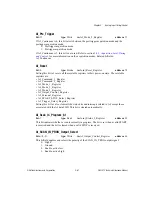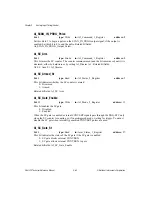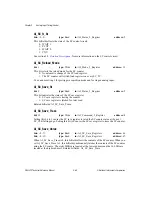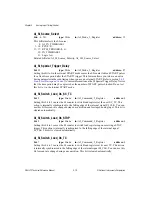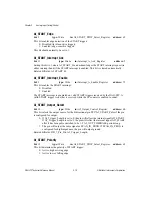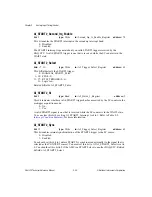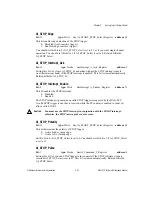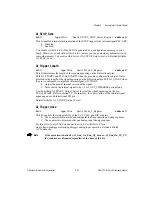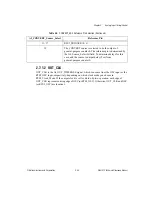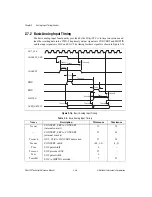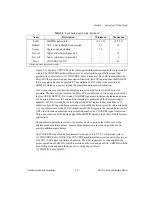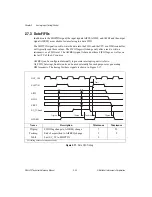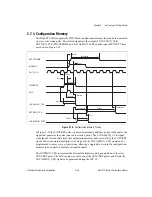
Chapter 2
Analog Input Timing/Control
DAQ-STC Technical Reference Manual
2-74
©
National Instruments Corporation
AI_START_Edge
bit: 5
type: Write
in: AI_START_STOP_Select_Register
address: 62
This bit enables edge detection of the START trigger:
0: Disabled (level-sensitive trigger).
1: Enabled (edge-sensitive trigger).
This bit should normally be set to 1.
AI_START_Interrupt_Ack
bit: 11
type: Strobe
in: Interrupt_A_Ack_Register
address: 2
Setting this bit to 1 clears AI_START_St and acknowledges the START interrupt request (in
either interrupt bank) if the START interrupt is enabled. This bit is cleared automatically.
Related bitfields: AI_START_St.
AI_START_Interrupt_Enable
bit: 3
type: Write
in: Interrupt_A_Enable_Register
address: 73
This bit enables the START interrupt:
0: Disabled.
1: Enabled.
The START interrupt is generated on valid START triggers received by the DAQ-STC. A
valid START trigger is one that is received while the SC counter is enabled to count.
AI_START_Output_Select
bit: 10
type: Write
in: AI_Output_Control_Register
address: 60
This bit selects the output source for the bidirectional pin PFI7/AI_START_Pulse if the pin
is configured for output:
0: If AI_Trigger_Length is set to 0, the pin will reflect the internal signal AD_START.
If AI_Trigger_Length is set to 1, the pin will reflect the internal signal AD_START
after it has been pulse stretched to be 1–2 AI_OUT_TIMEBASE periods long.
1: The pin will output the same signal as SCAN_IN_PROG. If SCAN_IN_PROG is
configured for high impedance, the pin will output ground.
Related bitfields: BD_7_Pin_Dir, AI_Trigger_Length.
AI_START_Polarity
bit: 15
type: Write
in: AI_START_STOP_Select_Register
address: 62
This bit determines the polarity of START trigger:
0: Active high or rising edge.
1: Active low or falling edge.


